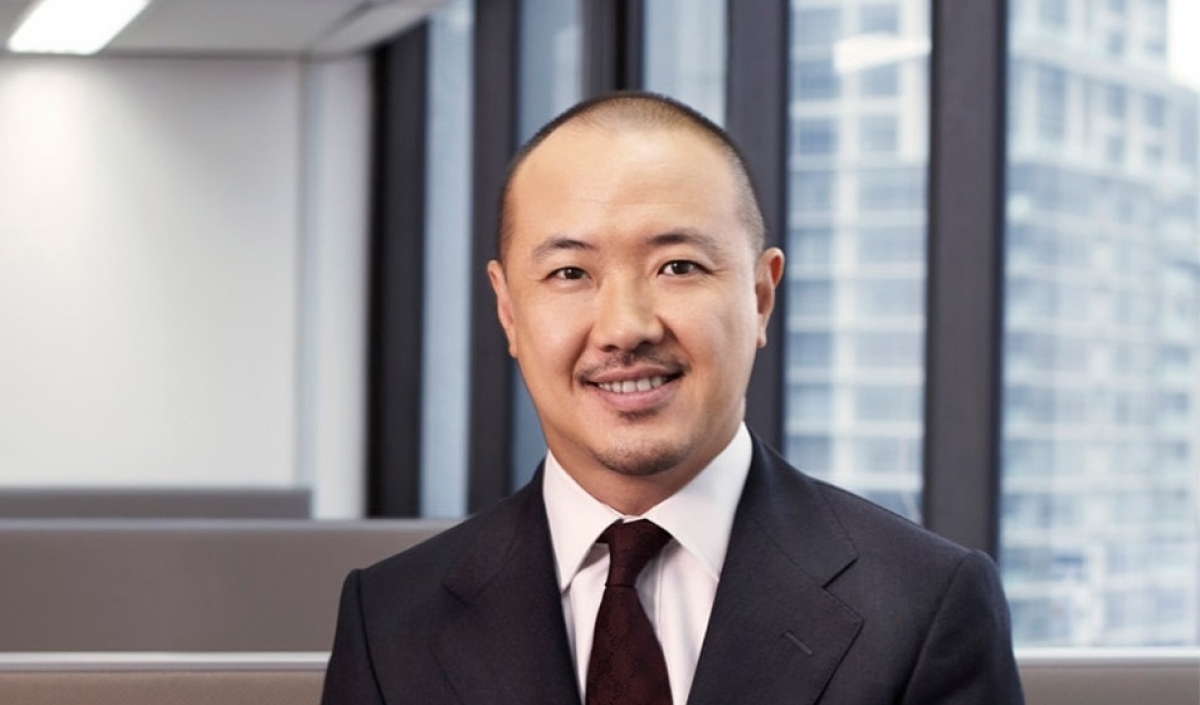INTERNATIONAL INVESTMENT
AND PORTAL
Despite the year’s complexities, Vietnam reached positive economic growth in 2021. Luke Hong, group head and lead economist for Vietnam at the ASEAN+3 Macroeconomic Research Office (AMRO) based in Singapore, talked with VIR’s Thanh Tung about the economy’s performance and the driving forces for its prospects in 2022.
 Luke Hong, group head and lead economist for Vietnam at the ASEAN+3 Macroeconomic Research Office (AMRO) based in Singapore
Luke Hong, group head and lead economist for Vietnam at the ASEAN+3 Macroeconomic Research Office (AMRO) based in Singapore
Vietnam’s economy has grown by 2.58 per cent in 2021. How do you assess the performance in comparison with other regional economies?
Vietnam’s growth rate is lower than the regional average of around 3.8 per cent (excluding Myanmar). The lower growth is attributable to the containment measures taken in response to the pandemic, particularly since the third quarter of 2021.
Although the growth rate is lower than the regional average, it reflects the base effect stemming from the country’s 2.9-per-cent growth in 2020, which was significantly higher than the average growth rate of regional economies of about -2.2 per cent.
The Vietnamese National Assembly has set a target of 6-6.5 per cent growth for 2022. What will be the key drivers to achieve this ambitious goal?
As Vietnam is a highly trade-oriented economy, one of the growth drivers for 2022 would be the manufacturing sector.
If Vietnam can sufficiently contain the pandemic and minimise mobility restrictions, particularly on factories and workers, its manufacturing sector will continue to benefit from the recovery in external demand, which has led to expanded capacity even during the pandemic.
Looking ahead, we expect the service sector to rebound as restrictions are loosened in tandem with faster vaccination rollouts, allowing it to recover alongside the manufacturing sector. The strong recovery of the manufacturing and service sectors is vital in supporting Vietnam to achieve the 6-6.5-per-cent growth target of for 2022.
Vietnam has been furthering its international integration with a raft of free trade agreements (FTAs). What will the country benefit most from in 2022?
With the myriad bilateral and multilateral FTAs that Vietnam has signed in recent years, the country is well-placed to benefit from lower tariffs brought about by the agreements.
Looking ahead, Vietnam stands to gain the most from trade, particularly exports of manufactured goods and agriculture products as trade liberalisation continues to be expanded.
It is vital that the government works hand in hand with the private sector to ensure Vietnamese products meet the eligibility criteria specified by FTAs, such as rules of origin, so that firms can fully take advantage of preferential tariffs.
Prolonged disruptions in production could shift foreign demand to other countries temporarily, if not permanently. In the coming months, firms should cooperate with the government to implement safe distancing measures to contain infections among workers and accelerate vaccine rollouts. It is also crucial for businesses to minimise disruptions to production and explore new market opportunities for additional sources of growth.
What is your assessment of the role of foreign direct investment (FDI) to support Vietnam’s economic growth in the coming years?
FDI continues to pour into Vietnam, dropping slightly from $16.1 billion in 2019 to $15.8 billion in 2020, reflecting the impact of the decline in overall global activity. But the drop was somewhat offset by reconfigurations in global supply chains from China to other countries, including Vietnam, thanks to its effective management of the COVID-19 situation in 2020.
Thus, FDI has been relatively resilient in 2021 and is expected to remain strong in 2022.
What are AMRO’s policy recommendations for Vietnam to ensure strong growth that benefits both the public and private sectors?
Fiscal policy should continue to play an important role in supporting the economy. Considering available fiscal space and with increased economic uncertainty after a large outbreak, greater fiscal support may be warranted. Meanwhile support to micro, small, and medium enterprises and low-income households should become more targeted and reviewed periodically for relevance and effectiveness.
In addition, it is vital to ramp up disbursement of public investment to bolster economic recovery. Accommodative monetary and macroprudential policies have been supportive of the economy and should remain in place in the near term. On the monetary policy front, the rate cuts have lowered banks’ financing costs and supported credit extension.
The expansion in the coverage of debt restructuring and the extension of the timeline for loan loss provisioning are crucial in easing the pressure on affected borrowers and safeguarding banks’ balance sheets during the economic recovery.
Going forward, given the benign inflation outlook, monetary policy should remain supportive of economic recovery. Asset prices and leverage conditions need to be closely monitored and taken into consideration in determining when and how the policies should be adjusted. Structural reforms should be accelerated to bolster economic recovery and upgrade long-term growth potential.



















